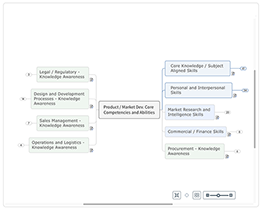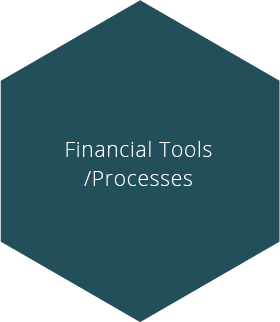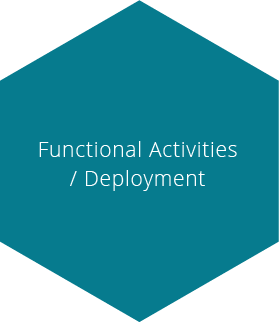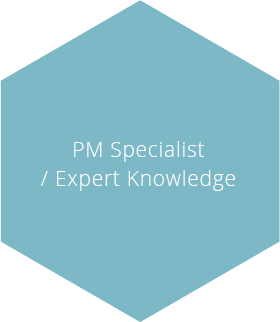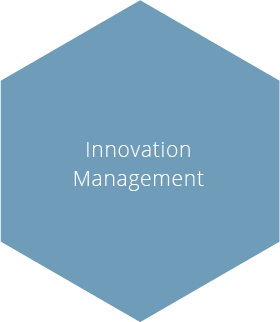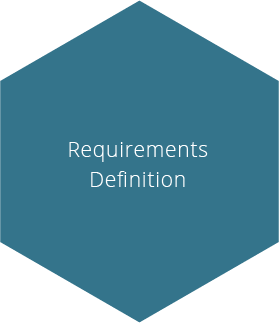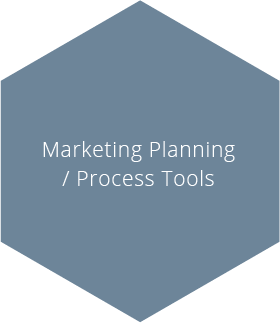Glossary
Logout
©Copyright Arcturus 2022, All Rights Reserved.
7
Terms & Conditions
|
|
|
|
Security & Privacy
Contact
CONTEXTUAL WAYFINDER
“…following 'Best Practice' method delivers excellence and repeatable outcomes…”
Steve Heron
|Solutions & Resources for Strategic Thinkers, Innovators & Direction Setters

Arcturus7 |PMM, is a compendium of high-quality Product Management content and resources, complemented with a collective of 'Interactive Business Models', 'Pro-Desk Pads', 'Wall Charts' and 'Workshop Stationery' available from the Arcturus7 |Hub.
You have access to an unrivalled 'Product Management' framework which is eminently flexible and scalable to align with virtually any application - effectively making this innovative PM framework 'future proof'.
This 'World-Class' body of knowledge represents a unique compendium of processes and activities culminated from over 25 years of professional 'first hand' practical experience within management training and consultancy domain. Integrated support activities (including 'on-demand' 1-1 support) is available at your disposal. You can also reserve meetings, book training seminars and request consultancy support all from within the online facilities.
In summary, the Arcturus7 website provides a unique and powerful compendium of tools and strategic processes ensuring your company delivers a continuous stream of realisable benefits to your Customers. As we all know, ...following method and structure ultimately means you are both more efficient and effective, leading to a culture of repeatable success.
- Access to unrivalled professional (generic) content and training material.
- Comprehensive Help and Support for all content / material – On demand help & support (Live 1-1 video).
- Complimentary access to over 400 pages of professional content with powerful search facility.
- Perfect content for use in strategic Product Management activities.
- An option to use (under licence) all content in your own business / workshops.
- Access to over 40+ interactive business models covering every aspect of the Product Management activity.
- Access to online training content and streaming video
- Optional Programme / Product Management content with direct Integration to MindManager by Mindjet.
- Access to Product Management training material via on-line training programmes, Webinars and blogs.
- Access to Workshop tools and training aids.
Arcturus7 Design Architecture & Content : Steve Heron, IPM
|Arcturus7 - Site Architecture & Framework
Navigation
Navigating Arcturus7 and Conventions.
Process Orientation
Where are we now?, what do we need to achieve? and how do we get there? method alignment.
Manage your products with absolute confidence, in the knowledge that you know exactly what to do next.
PMM Elements
Direct access to every tool and process required to manage your Product or Service.
Video content and interactive software models are at your disposal and can be downloaded for use at any time.
Business Planning Framework
Comprehensive but eminently flexible Business Planning framework to manage your Products across their entire Life-Cycles. Follow end to end or simply drop in as required.
Fast-Track PM Management is also defined for projects that need to be completed in a record time, whereby initial planning tasks are reduced to lean / essential tasks only.
Strategic Control Loops
Unique and powerful strategic control loops for making things happen. Strategic intent and continuous improvement is an integral part of Product Management. Fully described and supported.
TouchPoints
Strategic Intent objectives / strategies defined and cascaded with military precision. There are 5 defined TouchPoint groups that interactively cover the entire Product Management activity. Complete management control.
Personal Development
Access to the membership based Private Training Lounge. Core Competence requirements / Personality Profiling.
Help & Support
Comprehensive help & support for all published content, whenever you need it - 'on demand'. We are always here for you.
Arcturus7|Hub
The centre point for Arcturus7. Includes a 'Commerce' gateway offering a vast array of products and services for you and your team - Professional Product Management Tools .
Zoom - Presentation Mode
This symbol / feature is used throughout this website to indicate that the associated graphic and/or Active MindMap can be viewed at full screen. This is perfect for use (when projected) with a multidisciplinary team.
|Product Management ~ Quality Ethos
Delivering Quality is vital in everything we do...
In practice, the cost of not delivering quality in a business can be huge – in some cases, as high as 40% of all costs. ...Just think of all the costs associated with failure to get things right first time in your business – scrap, rectification, warranty returns, rejected deliveries, not to mention the wasted effort that went into producing this. Then there are all the costs of quality appraisal and prevention – testing, measurement, inspection, supplier quality assurance and so on. This obviously has to be balanced with perhaps the 'real' cost of quality when the organisation 'over' specifies quality demands - the cost of setting every product parameter variation at '6-sigma' levels could equally cost the company a small fortune.
Arguably even more significant than these internal costs of quality are the external ones. Failure in the eyes of your customers can and does lead to permanent loss of business and market share. It only takes one reported case o harmful bacteria in a food product to wipe out its sales and its brand image at a stroke.
The expected 'quality' of products or services together with the quality image of the company, are only ever judged by your customers. Achieving quality is therefore about continuously satisfying customers’ needs, profitably. Satisfying your customers cost-effectively requires everyone in the business to play their part. Total quality management is the process which seeks to achieve this. The concept of customer satisfaction also applies to internal customers. Every business process in your company can be viewed as a 'chain of customers' and suppliers. In this way quality and customer satisfaction can be extended to the whole organisation.
Achieving consistent overall (total) quality in any one process or activity, in any part of your business, requires good design, consistent process methods or procedures, consistent equipment, consistent materials and clear instructions. To control the process all these aspects must be monitored and adjusted as conditions change.
There are several important ingredients to Product Management quality improvement:
- Top team / Director level commitment. Without this you will inevitably fail to deliver the expected outcomes– don’t be surprised when it takes much longer than expected to get everyone on-board.
- Quality assurance systems, including Product Management processes, should be consistent and designed to realistically comply with recognised standards such as ISO 9000 etc. This will require you to define the quality standards you are seeing to achieve for customers, and the appropriate measure of quality performance. Then you must establish the main procedures which will have to be followed if consistent quality is to be achieved.
- The business / organisation should have a 'crystal clear' understanding of what is expected regarding the desired levels of quality for your positioned Products and Services - it should be realistic and correct. The role of Product Management is central to both the definition and delivery of demanded qualities (CTQ's) throughout the entire organisation - remembering that the tentacles of demanded quality are far reaching. Product Management therefore plays an important part in the delivery of 'Quality' and should not be underestimated or dismissed as, someone else’s department. As a discipline (rather like Quality) it is central to the 'functional' hub (multidisciplinary team) and the organisation. The multidisciplinary team (led by Product Management) must therefore completely understand, agree and communicate demanded quality throughout the organisation. If demanded Quality is not defined and measured, the organisation itself, by default will set its own ad-hoc level - which may not be good enough.
- Teamwork (TouchPoint) is a vital ingredient and it can be extended to suppliers and customers both internal and external. Teams must be encouraged to improve their collective and individual activities by applying the principles of ‘Customer satisfaction’, ‘right first time’, and ‘elimination of waste’. A significant of improvement ideas and opportunities are usually generated as a result – managers must be prepared to handle the extra work-load, and support employees who want to make improvements.
- Continuous improvement is the final stage. The whole culture of your business becomes one in which people seek to improve performance, proactive alignment of Products, introduce new ways of working, and raise the standards of quality in your business towards the ultimate goal of zero defects. Directors and the Management team must repeatedly reinforce the quality message and re-enthuse employees from time to time. Product Management Processes are central to this thinking, the whole culture and management style of your business will gradually but surely move towards an ethos of 'total quality'.
Embracing Product Management processes means much more than just adopting processes for the sake of it, maybe to achieve a quality level certificate. However, correctly deployed Product Management processes can simply transform the company’s economic prospects, but this requires effort and determination to transform the attitude and approach of the organisation, but this may actually be a challenge in-itself - ...make it happen, the results will be far better than the alternative.
Arcturus7 Design Architecture & Content : Steve Heron, IPM
|Organisational Structures, Product Management Observations & PMM Alignment
Product Management processes and activities must work in harmony with the organisation to deliver strategic intent efficiently and effectively - in other words they must be right for your business - operations and activities must add value.
Business planning and process constraints should, therefore, be understood/acknowledged throughout. Particular attention should be given as to how your business objectives / strategies are cascaded into the organisation and the use of multidisciplinary teams to get things done, this is often a weak area in many companies and have a detrimental effect on its outcomes. Changing the 'culture' of a steadfast business steeped in tradition should, however, not be underestimated, it will take careful rational to alter its course for the better.
The PMM core concepts are generic in its form, they can be deployed in part or as a process ethos entity into virtually any business environment, but we must understand 'Where are we now' (the initial start-point) and 'What do we want to achieve' (what are your expectations).
Please Note: If you would like to dip in and out of the tools and processes on an ad-hoc basis, that’s fine, you can do just that; however, expectations regarding the outcomes must be aligned accordingly. Likewise, the rigour and time spent on individual elements /subject areas are directly related to the level of business risk you are willing to accept going forward. That is to say, little or no planning = high risk, meticulous planning = risk averse. ...so you must decide the level of planning activity that is right for your business.
The following chart indicates different operational structures Vs a Company’s size with various attributions that, in turn affect the outcomes of the introduction of a 'Product Management' bias. We can however say with confidence that the PMM methodology is most suitable for deployment in any structure as described.

Product Management in Context and Perspective
In many organisations, the role of 'Product Management' is misguided and misunderstood (not that anyone openly admits to this fact) and individuals working within the role often work in a rather 'ad-hoc' fashion - as a 'management discipline' it is often misaligned within the operational environment with unclear terms of reference. Inevitably this leads to those individuals concerned getting sidetracked by functional areas and ending up not as 'strategic thinkers' but 'tactical' co-ordinators of various events within the business - sadly this situation is not uncommon.
The above is further compounded by 'Agile Development' and 'Stage-Gate Development', processes which put their own spin and expectations as to what the Product Management role is and is not. The recent creation of Agile 'Product Managers' and 'Product Owners' is evidence of this.
Product Management alignment within the Development activity/process has undoubtedly had a positive effect on the effectiveness of new product development activities, which is good, but in reality, what has been created is a completely different role to the one we have traditionally known for decades. So perhaps this new role should have been given a completely different title? In truth, it is confusing and unhelpful and the traditional 'Product Manager' is now suffering from what appears to be an identity crisis.
Reminder: The role and purpose of Product Management (...Product Manager, Market Dev.Manager and Strategic Director) is to strategically manage functional 'Abilities and Core Competencies' via strong multidisciplinary teams to deliver Product(s)/Services to the target market in alignment with Strategic Intent (...a collective of focused business objectives).
It's also not uncommon to hear that the 'Product Manager' has been told that they are the 'CEO' of their Product, ...in practice however, this vision is simply impossible to achieve, unless of course, you are the equivalent of Steve Jobs from Apple, so there's a good chance you are probably not! The main reason for this is that in practice you do not have any direct reports and to get most things done, it's by judicious helpings of influence and persuasion, or indeed by yourself!
Furthermore, it's often stated that the 'Product Manager' is required to own/manage the Product from 'Conception to Grave' and be seen as the Product Champion, writing Business Plans, Controlling and delivering the Product Marketing Strategy. This scenario does, in fact, work if you are managing a single product which is directed at a few key target markets (this is an option within the PMM Frameworks).
In the above scenario, problems materialise when both the Product Portfolio and Target Markets (...Geo-demographics) increases. At this point, interdependencies increase by square law and the ability to manage everything using the initial framework becomes unmanageable and it becomes virtually impossible to deliver the agreed objectives (Strategic Intent). In this example, the role of Market Development activity initially managed by the Product Manager becomes unmanageable and is typically ambushed by 'Sales Management' (with the best intention of course) who adopt their own strategies as to how, where and when the product is taken to market. Unfortunately, at this point, the Product Strategy turns Tactical and rapidly becomes 'short term' ...which is jam today! This often leads to a constant stream of requests to 'add' features to the product in question, on the promise of additional short term sales! - this is a jobbing shop approach and can have a questionable outcome. Unfortunately, for obvious reasons, this situation can deteriorate further and faster if Sales Management is paid a commission and perhaps even worse if Sales Management is awarded a full-time seat at board level - which is not uncommon.
The importance of the Sales Management activity, however, should indeed not be undermined or dismissed. Without a doubt, Sales Management is a highly respected and essential management function and deserves a critical success factor status. Furthermore, we must remind ourselves that ...nothing happens in business until you sell something! However, this knotty interrelationship issue remains prominent in many businesses and is directly responsible for 'inefficient' product management activities, leading to strategic misalignment against the original business strategy.
We, therefore, need to be mindful of how each Functional area of the business plays its part in delivering 'the right product at the right time', even more so when there is a large product portfolio in the mix. Central to this activity is Product Management who are directly responsible for driving organisational strategy throughout the business. So if the role/discipline of Product Management is poorly executed or not at all, functional areas across the business, will by default dictate an unplanned commercial outcome.
Given the above scenarios, Product Management, if left to the Functional departments to execute will almost certainly, over some time descends into short term tactical activities throughout the organisation, together with a string of negative consequences. This route usually involves significant fire-fighting activities, which adds undue levels of stress to all concerned. The importance of the Product Management activity is, therefore, key to the success of any Product / Portfolio of Products and should be strategically planned within an agile, continuous improvement environment, as described herein.
As a crucial recognised discipline, the Product Management activity is at its best whilst operating within a structure of strong multi-disciplinary teams, made up of the timely involvement of each Functional areas of the business (represented by functional TouchPoints). Functional areas are responsible and accountable for delivering strategic objectives against defined and agreed Strategic Intent (defined by the business). Essentially this delivers a cascade of specific objectives and strategies throughout the business, this ultimately means that everyone within the organisation who 'touches' the Product / Service needs to deliver against expectations, measured against defined critical success factors and managed accordingly.
In conclusion, ...and for any business/organisation with dysfunctional or suboptimal Product Management activities, this is the ideal opportunity to give some serious consideration to the deploying a robust, well thought through Product Management framework - the results are extremely compelling and will be worth the effort.
Arcturus7 Design Architecture & Content : Steve Heron, IPM
|PMM Interdependencies Matrix - Management Phases Vs Tools & Processes
The secret of best practice Product Management lies in a robust planning structure. The principles of the PM methodology ensure that any product/project falls into one of Six (Innovation, Conceptual, Development, Product Release, Active LifeCycle and withdrawal) time related phases and enables a common set of process deliverables to be defined.
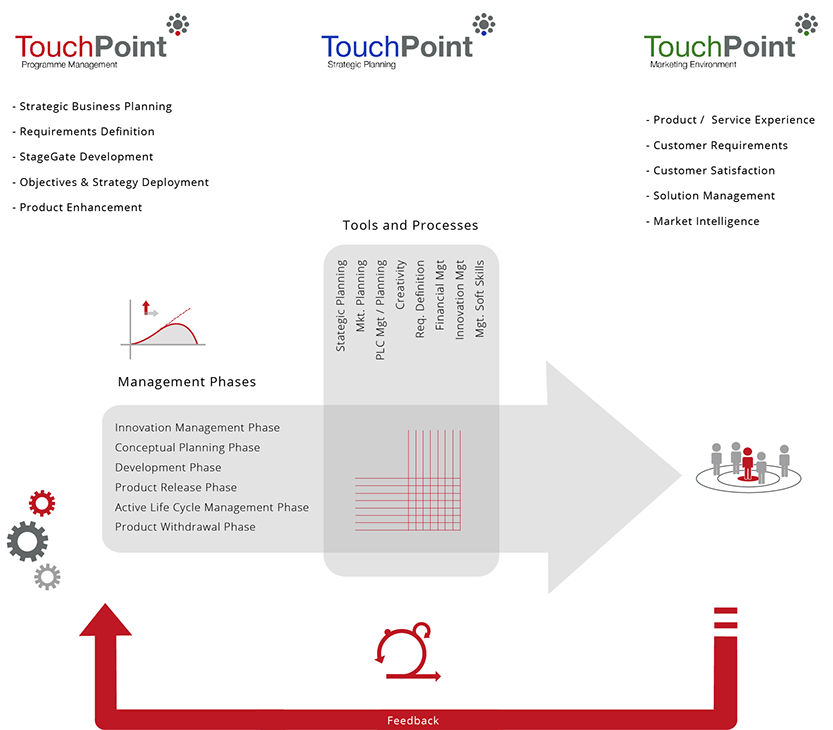
PMM - Methodology - Designed from First Principles...
The following images are (actual screen shots) of the massive of the PMM interdependencies matrix. There are currently over 14,000 mapped interdependencies at a generic level - this in turn has enabled us to understand the importance of specific tools and processes, which vary accordingly across the lifecycle of any given product / service. This by definition represents the 'core' of the PMM Methodology.
This powerful body of knowledge provides us with a unique viewpoint into the world of 'best practice' Product Management . Further analysis of the PMM matrix has enabled us to provide a collective of unique prioritisation graphs used across this website.






Matrix A
Matrix B
Matrix 1
Matrix 2
Matrix 2Z
Matrix 3
4 - 6
<
>
The PMM 'core' Methodology was conceived and developed by Steve Heron, Principal Consultant, IPM in 2007. The methodology was meticulously developed entirely from first principles, nothing has been added without justification, so every element is there for a reason and naturally makes sense. To maintain absolute relevance the PMM is subjected to a programme of continuous improvement and practical calibration, as such the methodology therefore represents the pinnacle of best practice.
|Product Management - Market Development & Operational Alignment
PMM 'frameworks' have also been developed from first principles and feature an open architectural footprint - future proof. This means you able to robustly manage a portfolio of Products / Services across individual 'life-cycles' in the knowledge that it is structurally sound and flexible enough to be rolled out across 'any' business unit. Obviously there is no such thing as a 'generic business', they come in all shapes and sizes with their own unique quirks and idiosyncrasies. As such this must be to be taken into account when deploying any management processes - it has to be right for the organisation concerned - a management process that is an incorrect fit or goes against the culture will be badly received and soon fall into disrepute. Senior management must therefore believe in the system / process with a passion and results will undoubtedly flow thereafter.
Strategic Product Management - Discipline Alignment Maps...

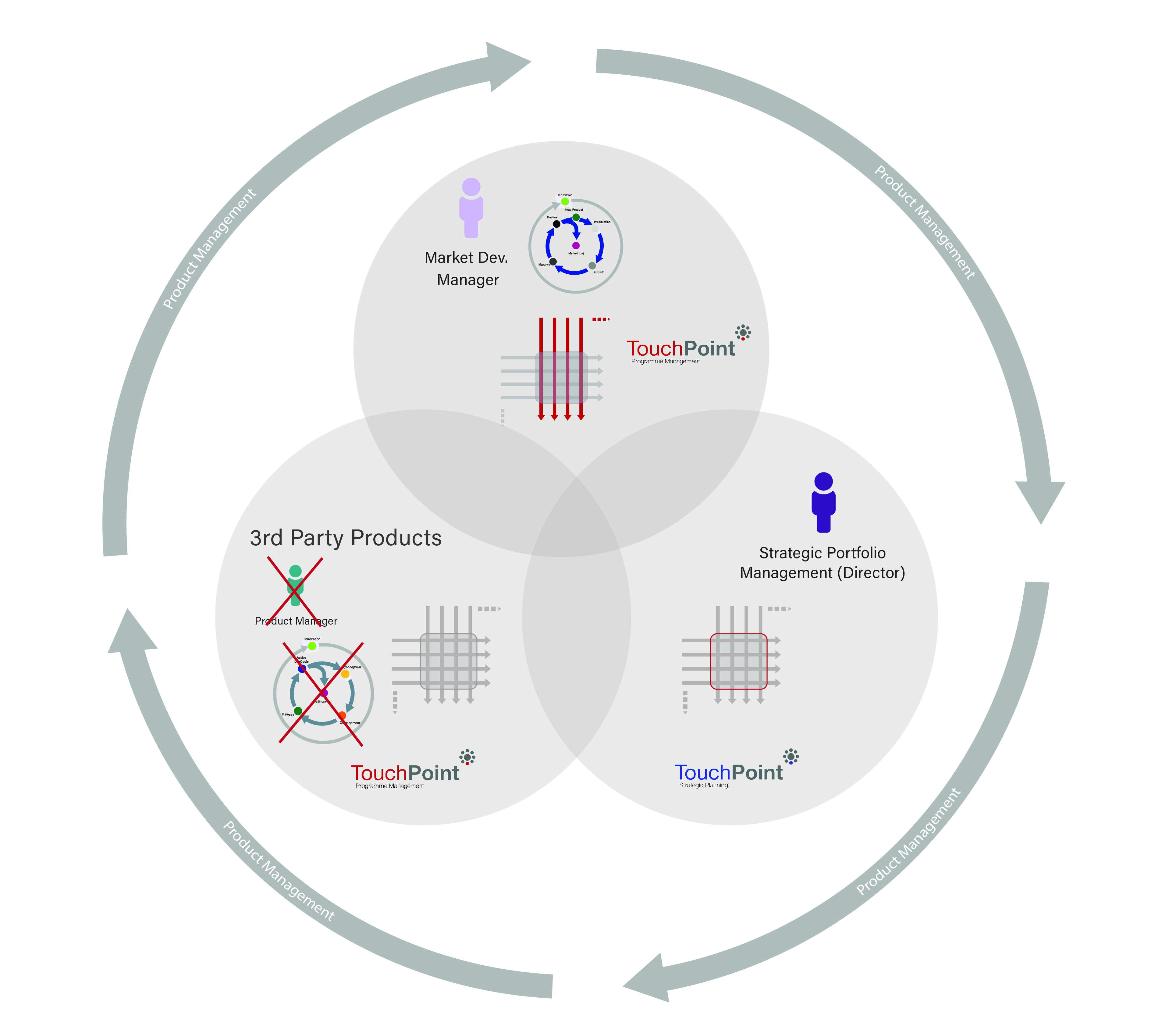

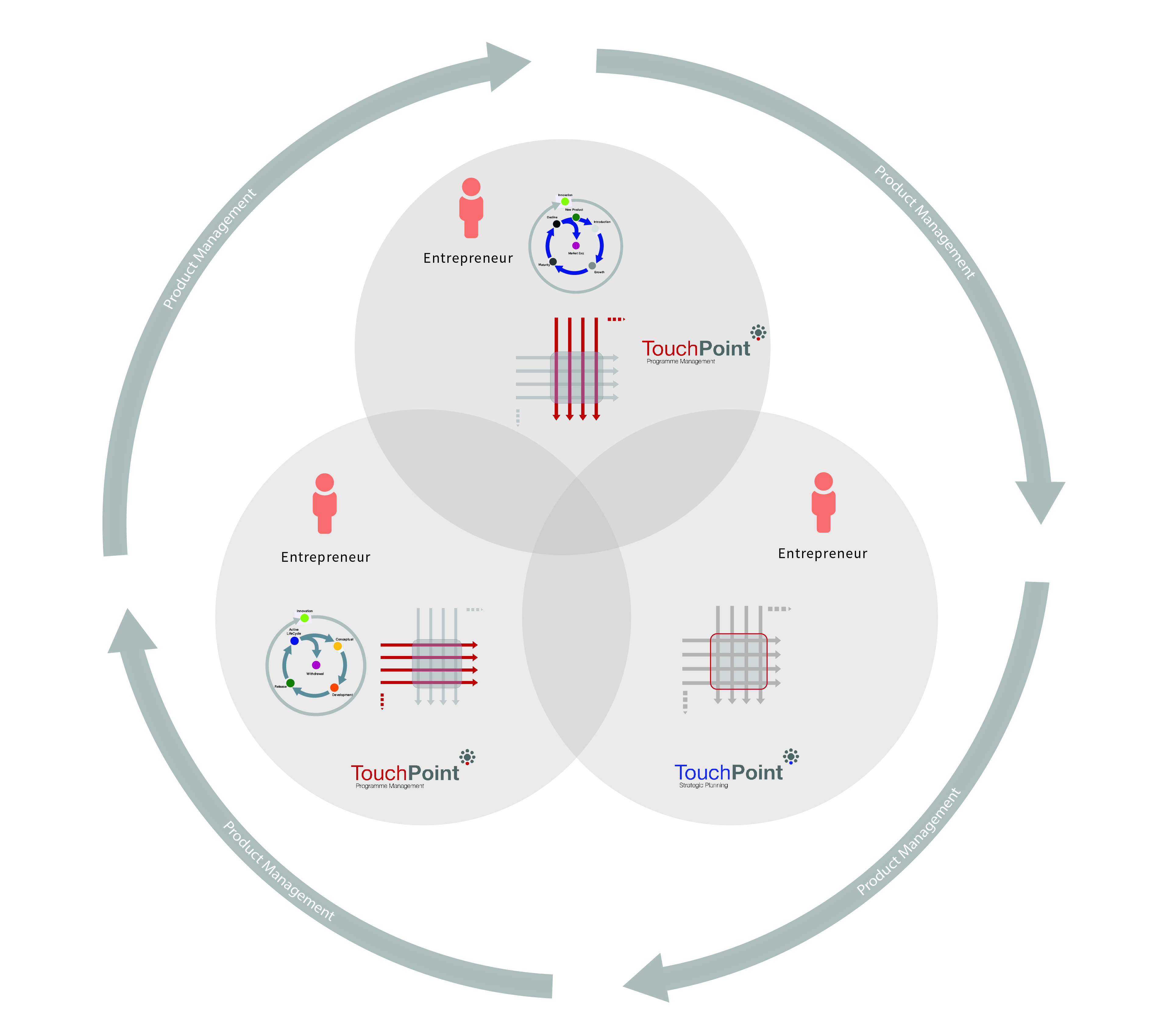
‘Click to Expand’
PMM Methodology - Product LifeCycles
Product Management activities lie at the heart of the (Product) LifeCycle process. As the name suggests a ‘LifeCycle’ is a time related series of events managed in accordance with the requirements of an actioned strategy. Timing also plays a big part in this rationale. The ‘ethos’ of managing the Product LifeCycle is well understood (…in theory) however in practice it becomes somewhat nebulous as there are many variables to be taken into account which are not entirely under our immediate control.
There are effectively two LifeCycles that must be managed. The first of which is the Product Management LifeCycle which is an internal management activity and comprises of six phases:
As you can see from the diagram below, the Innovation Phase completely surrounds the other 5 phases of Product Management and is by definition a perpetual activity - it should definitely not be seen as a 2 week 'think and sprint' prior to a new product development project. Strategically, the role of Product Management is to manage the Product across it's entire Product LifeCycle with the objective of maintaining its product position within the target market. Depending upon the market itself, this will inevitably require enhancements and tweaks that ensures it remains competitive as long as possible against competing offers.


The second LifeCycle, which is interrelated with the first, is a Product LifeCycle from a market perspective. There are five specific phases to this LifeCycle; Introduction, Growth, Maturity and Decline. Each of the phases mentioned are directly related to a time frame which, in turn, is linked to many variables (internal and external).
A product LifeCycle is fundamentally the 'cause & effect' of Strategy, as such, it requires constant observation and adjustment to ensure viability and commercial results tracks with expectations. It should be noted however, that if a product is released and left to its own devices (not managed as such), it will still have a life cycle - but it equally it may never reach your commercial expectations.
Best Practice Product Management Framework (Generic)
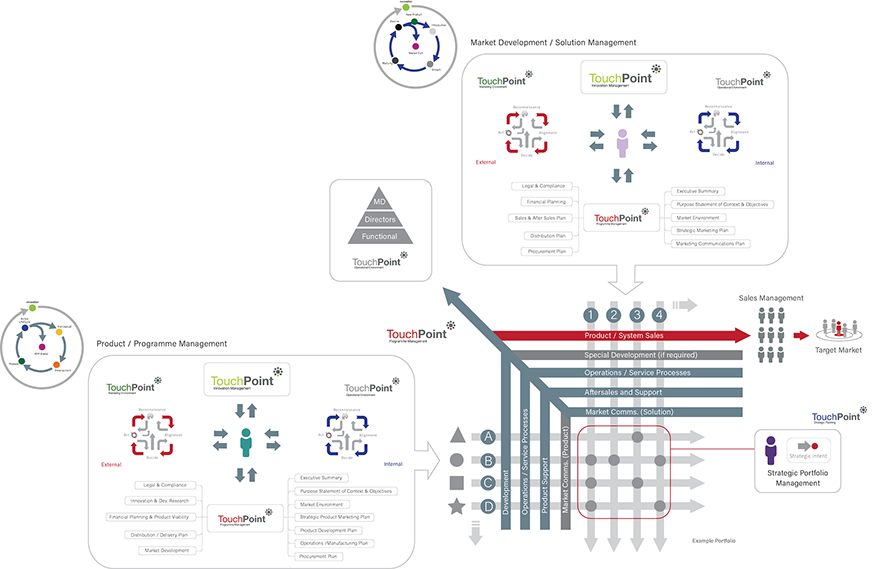
Arcturus7 Design Architecture & Content : Steve Heron, IPM
The above (diagram) PMM framework is one of four (generic) variant frameworks that successfully align the Product Management activity into a wide range of businesses.
Operationally, the PMM framework promulgates an ethos of making it happen with Goals, Objectives and Strategies cascaded from the very top of the Company by the use of highly focused multidisciplinary teams, led by Product Management. As such, the product teams are wholly responsible and fully accountable for driving the Product / Service through every part of the organisation, from the cradle to the grave - in short, every functional area must know and understand what is expected from them.
The above rationale will have the desired effect of making the 'Product Management' activity (...which includes the Product Manager, Market Development and Product Director) the 'contracts giver/provider' to the operational environment - this simple alignment (or re-alignment for some companies) robustly makes everything crystal clear, the outcomes of which, once implemented are nothing short of compelling. It is perhaps a bold generic statement to make, but from our 25+ years practical experience, any other Product Management alignment is simply full of compromises with many disadvantages.
With the PMM alignment framework in place, each function within the Operational base plays their own part in a strategically aligned multi-disciplinary team environment. Furthermore, managing individual products or portfolio of products across their life-cycles, the strategic business programme is always under-review, this promulgates a constant desire for pro-active Continuous improvement.
Arcturus7 Design Architecture & Content : Steve Heron, IPM
|Product / Market Development Manager- Abilities and Core Competencies

Product Management is an essential business discipline ensuring timely functional activities are provided throughout the Product LifeCycle in-line with Strategic Intent. In essence Product Management ensures the business unit Capabilities deliver Core Competencies at the right time, every time. A Core Competence should translate directly into a Competitive Advantage.
In addition as an embedded ethos, Product Management should actively embrace the core principles and Practice of Simplicity and Continuous Improvement'
It comes as no surprise that the quality and effectiveness of Product Management activity is directly related to the Capabilities of the individuals embedded within this activity. ...The quality of the outcome is directly related.
The Management of Core Competencies
Competencies by definition are a collective of directed and managed Capabilities. Competencies can be associated with technology, distribution, logistics, purchasing, service etc. and/or a specific combination thereof. Product Manager's, Market Development Manager's and Strategic Directors are therefore directly responsible for the management these requirements. Rather like the conductor of the orchestra.

The following diagram(s) and Interactive MindMap, indicate the core 'abilities' (subjects) that are required to manage the Product Management activity across the entire product lifecycle and the dynamic relationship of importance of the key attributions across those phases.
Product / Market Development Manager - Core Competencies and abilities Interactive Mindmap:

Product Manager Skills / Capabilities Profile across the 'Product LifeCycle'.
Arcturus7 Design Architecture & Content : Steve Heron, IPM
|Product Management Tools and Processes - Direct Access
Product Management Freedom...
If and when you desire the freedom to go your own way ...you have direct access to all the elements (tools and processes) without constraints.
...Tools and Processes for Strategic Thinkers, Innovators and Direction Setters.
Product Management is a key 'strategic' activity in any business unit - Implement it correctly, Practice it, Master it and the results will follow. For all those involved in this important discipline / process, the responsibility of making clear decisions from pragmatic rationale is a prerequisite in this continuous / perpetual activity.
This unique collective of Best Practice 'tools and processes' complemented with workshop material and software modelling will ensure quality decisions are made in a robust and timely way.
As a business strategist you should demonstrate pragmatism and clarity in everything you do. Rock solid decision making and Communication skills are absolutely fundamental when operating in the Product Management domain. Understanding every nuance about the business, its operational environment, and what needs to happen next, are all fundamental activities that provide 'Strategic Vision'. Needless to say the very essence of leadership is that you have to have good Vision and to have good Vision ultimately means you posses the key attributions of 'knowledge', 'Understanding' and 'Talent'. ...With these abilities, we can deliver Core Competencies.
The PMM Elements section gives you direct access to a library of dedicated tools and processes that have been specifically aligned to the Product Management task and represent modern day ‘Best Practice’. They can be followed as part of robust management process (such as the PMM ) and is the most effective approach, however all 'elements' within this section can be accessed and used autonomously. This ultimately means they can all be used on a 'as and when' required basis to suit your own application.
There are over 60 best practice tools available (...all mapped for their suitability), accessed by clicking on the appropriate hexagonal section.
Once you reach the intended subject level required, you can choose to purchase / download (if applicable) the 'interactive business model'.
Arcturus7 Design Architecture & Content : Steve Heron, IPM
|Solutions & Resources for Strategic Thinkers, Innovators & Direction Setters
A gateway to a unique portfolio of Products and Services for Entrepreneurs, Businesses, Education Establishments and Commerce.
There are over 100+ individual products / services on Arcturus7 |Hub. If you require strategic modelling to analyse scenarios with clarity and purpose its here, ...or maybe use one of the many desk planners available for that added visual inspiration / strategic alignment, or how about the 'on-demand' Product Management consultancy services (...1-1 with absolute confidentiality), or enrol on one of our inspirational training courses.
Enter
e-commerce
|PMM - Independent Academic Review
The PMM process / methodology has been officially assessed for its ‘value’ and ‘academic’ alignment by Professor Mike Kaye of Portsmouth University UK. This independent review has confirmed the approach and has resulted in an official credibility check for the methodology and its principles. The original report was quite a weighty document which covered various aspects of the methodology regarding its robustness and suitability for the task of product management and as part of a company wide strategic / quality process.
“Is the PMM of Value?”
I believe the value lies at several levels:
Level 1: At an individual level — developing knowledge of the models and
processes and interfaces with others in the "supply chain". The academic rigour of the PMM content lends itself to a qualification or accreditation, thus achieving professional status and recognition for the competence of the Product Manager.
Level 2: At a team level — creating an understanding of the end-to-end process.
Level 3: At an organisational level — creating a greater customer, competitive focus. Creating a greater understanding of the risks of product development at each phase and the ability to evaluate the consequences, which may not have otherwise have been the case.
Level 4: At an external (customer) level — the result is more likely to meet the end user/customer needs. From a market perspective, there is an opportunity to achieve a greater market share and to understand the organisation's competitive standing in relation to competitors (through strategic benchmarking): getting into the mind-set of the competition through interaction and discussion.
Level 5: At an economic level — as a methodology with which to achieve world-class product management and contribute to the wider community of stakeholders.
Conclusion: Overall Judgement
PMM is outstanding in its architecture, structure, methodology and purpose. As indicated in the "Strengths" above, there is no doubt that PMM is sound in that it is based on academic rigour and analysis underpinned with in-depth comprehensive business models. The phasing ensures a logical flow with excellent interaction of the phases and cross-referencing. Given the appropriate environmental conditions (including competence of Product Manager, a culture conducive to multi-functional working and top management commitment and involvement), PMM is a powerful vehicle with which to achieve a greater competitive focus with the potential to yield real value on a number of levels (as above).
Where the desired cultural environment is not in place, the PMM offers the potential as a catalyst for change in developing the necessary culture (although this will require careful thought and possible adaptation of the methodology as it is currently designed).
Professor Mike Kaye, Portsmouth University, UK
|PMM - Professional Support







